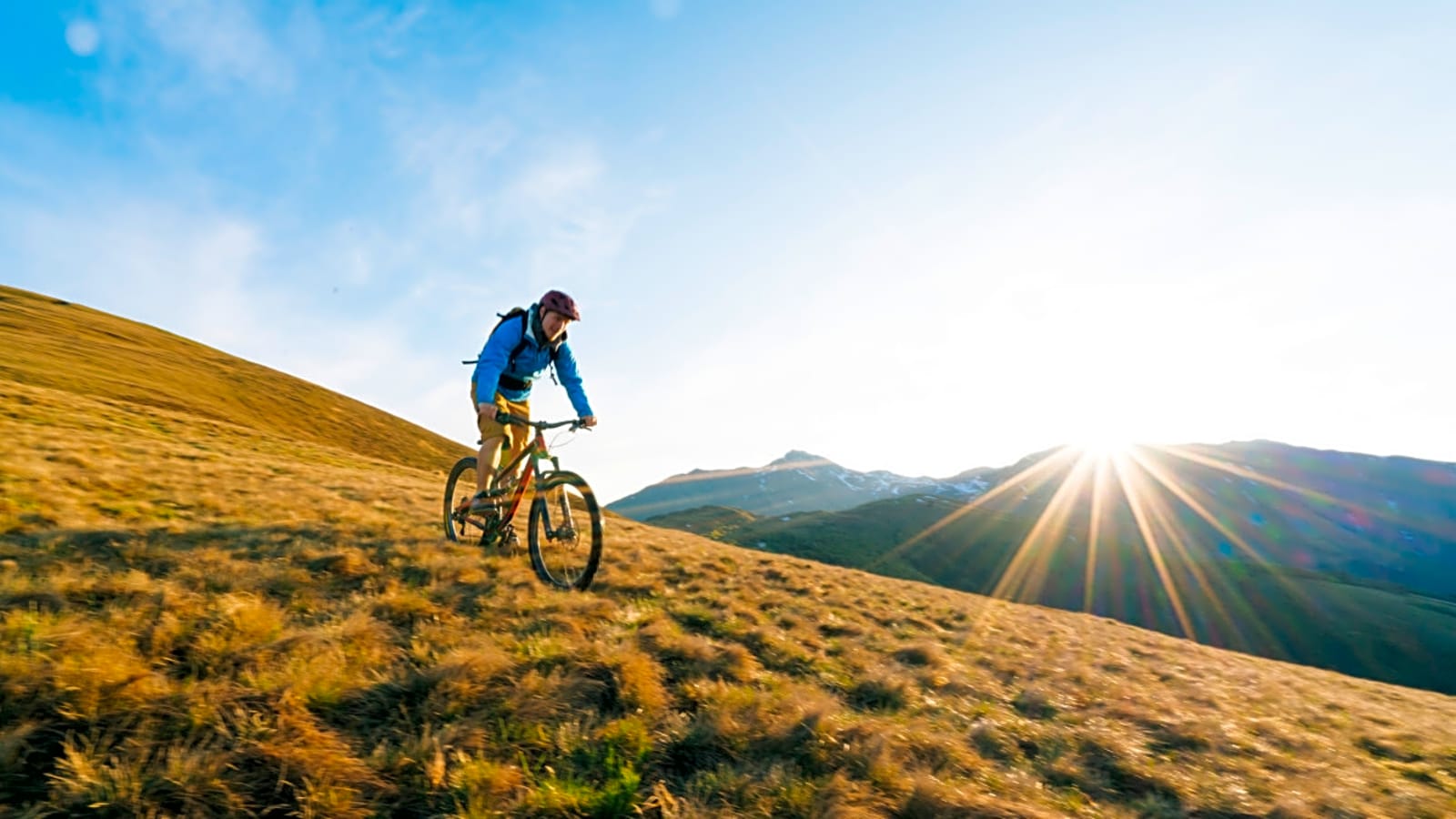
Some sports are year-long affairs. Most residents of California, for instance, can walk outside and play tennis whenever they want. Skiing, of course, isn’t this way. It’s time sensitive. You’re either anticipating winter or trying to take advantage of it.
For people who consider themselves skiers first and foremost, this leaves a yawning void. What the hell are you supposed to do in the summer? Twiddle your thumbs? That’s a good place to start. But several summertime sports and activities are great replacements for skiing, mimicking the endlessly entertaining downhill dance with gravity—even during the off-season. Others are just good excuses to get outside and get your heart rate up.
These are some of our favorites.
Want to keep up with the best stories and photos in skiing? Subscribe to the new Powder To The People newsletter for weekly updates.
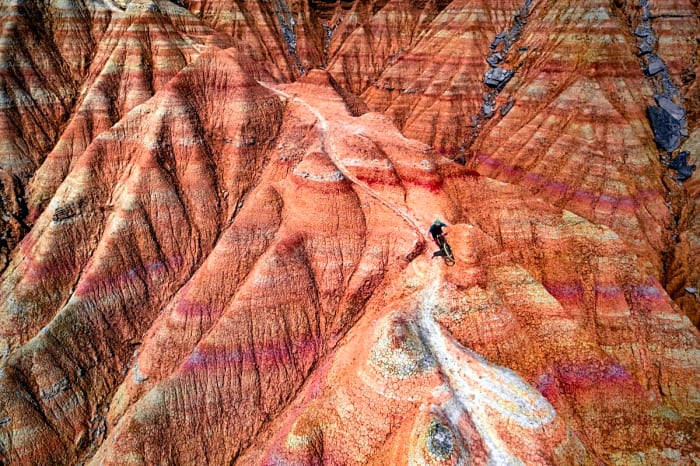
1. Mountain Biking
You may have heard it before. “Dude. You have to try mountain biking. It’s just like skiing.” If you’re a summer agnostic skier, you may have also rolled your eyes in response.
It’s true, though. That sentiment is real. The sensation of skiing is tough to mimic, but mountain biking gets pretty darn close. Flowing down a curvaceous bit of single-track lights up the same reward centers as skiing. For those craving the pull of gravity, pulling the trigger, buying a mountain bike (sorry they cost so much), and heading to the hills may be the best way to cure the summertime blues.
As an added bonus, loads of ski resorts have summer bike parks, so you can ride the chairlifts and see what your favorite trails look like after the snow melts. Timberline Lodge, Oregon, and Mammoth Mountain, California, are two good places to start, but mountains across the country have their own offerings.
The one major drawback is that falling on dirt and rocks hurts much, much more. Wear a helmet and maybe some body armor, folks. Nothing sucks more than injuring yourself before the ski season starts.
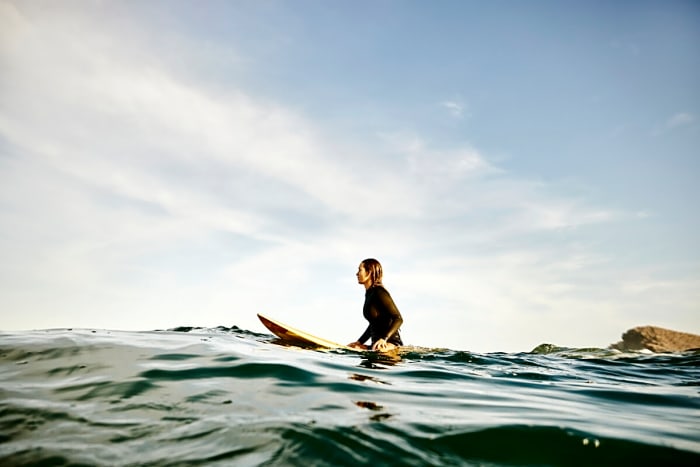
2. Surfing
We’re forever grateful that the silly “conflict” between single and double plankers is, for the most part, dead. That frees up skiers to experiment with snowboarding, surfing, and skateboarding without feeling like they’ve joined the evil empire.
Among those three sports, surfing is a wildly popular summertime alternative to skiing. For starters, once you’ve bought a surfboard, public beaches are far more accessible than the mountains. Drive up to the break. Get out of the car. The waves, if the weather’s cooperating, are yours for the taking.
Do some homework beforehand, though. Surfing’s notoriously hard, and the lineups on the water often have etiquette that surfers—beginner or otherwise—should adhere to. Resisting the urge to snake someone else’s line is a good place to start, but most skiers already knew that. Poaching another person’s first tracks on a powder day is a similar thing.
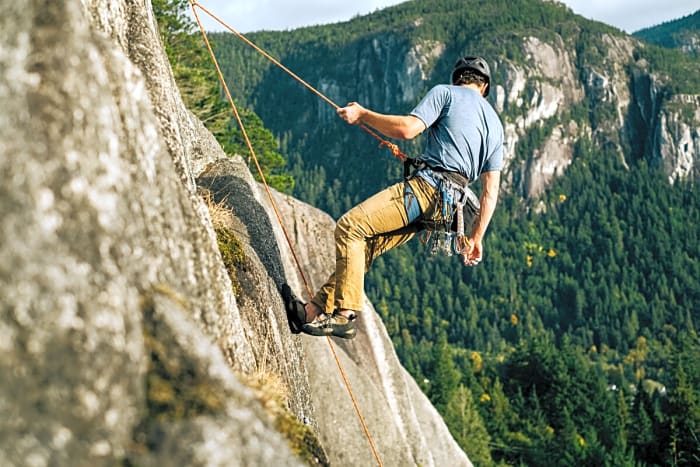
3. Climbing
Technically, climbing is the exact opposite of skiing. Instead of going down the mountain, you go up. That makes the sport feel much different than skiing. It’s slow, methodical, and, at times, very uncomfortable. Hanging on to a tiny wedge of plastic or rock will have your fingers begging for some PTO in a flash.
There are similarities between climbing and skiing, though. For one, both sports emphasize the great outdoors. Yes, you can—and probably should—sign up for a climbing gym, but nothing beats the joy of surveying the surrounding mountains while dangling from the side of a cliff face.
The sense of accomplishment associated with climbing transfers smoothly, too. You know the sensation of finally making it to the bottom of a tough run? Climbing offers that in bite-sized pieces. Each time you reach a new sport climbing or bouldering grade, you’ll feel a bit more like a badass. This is particularly true for beginners. Athletic folks can jump up several grades in only a few months if they’re consistent.
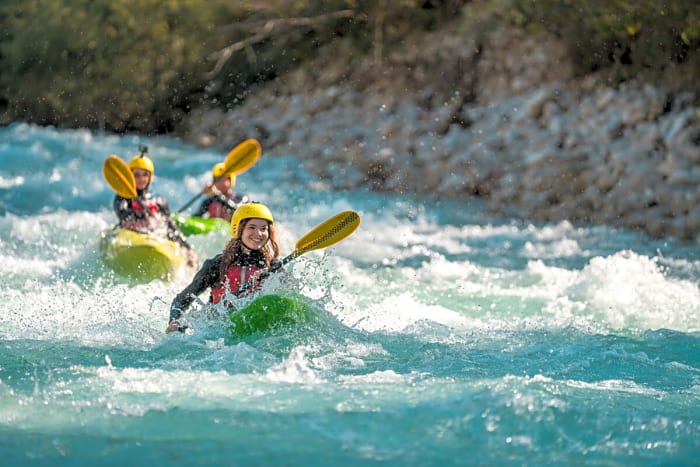
4. Whitewater Kayaking
Great skiers are often great whitewater kayakers and vice versa. Why? Both sports necessitate fearlessness, whitewater kayaking, arguably more so. Jumping off a cliff into fresh powder is one thing. Flying over a towering waterfall is something else entirely.
The main draw for skiers and would-be whitewater kayakers is that running rivers involves playing with gravity and testing your limits. These selling points draw skiers by the millions to the mountains each year, so it makes sense that some of them looked at a rushing river and thought, “Huh. I bet riding down that would be pretty fun.”

5. Skateboarding
Skateboarding is, admittedly, best reserved for those with supple joints and a willingness to eat concrete. Like surfing, this action sport is hard as nails, and it can take weeks—if not months—for a beginner to achieve meaningful progress. Kickflips and ollies are elusive. Twisted ankles and scraped elbows are, however, virtually guaranteed.
The challenge of skateboarding means it's one of the most gratifying pastimes on the planet, though. Every step forward is earned. No one, unless they’re uniquely gifted, will arrive at the skatepark for the first time and be able to show off. Improving as a skateboarder over the summer, then, can make skiing feel shockingly easy once the snow starts falling again. The balance improvements you’ll make will help with that, too.
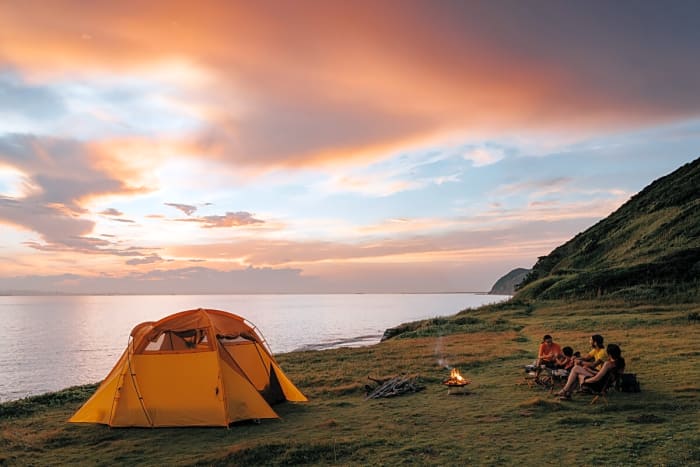
6. Hiking and Camping
If your goal is to capture the sensation of downhill skiing, hiking and camping obviously won’t do it—unless you trip and fall off the trail, that is. Rolling head over heels down a mountainside is universal.
But don’t scratch them off the list quite yet. The patient joy of wandering through the hills does have parallels with the uphill portion of ski touring. It’s meditative, good exercise, and a great way to get out of the house.
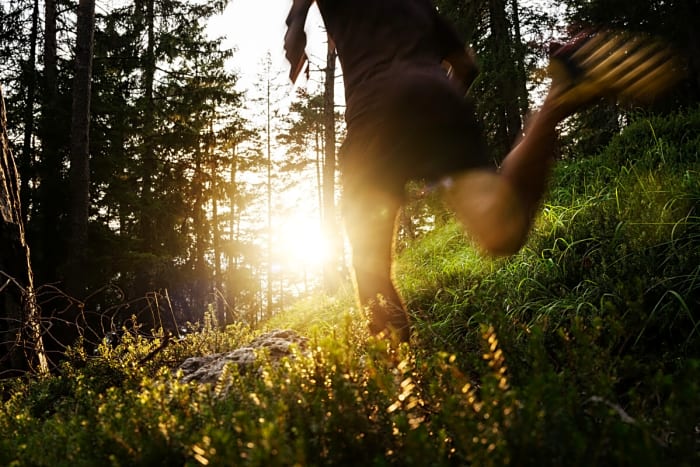
7. Trail Running
The more exciting cousin of hiking, trail running is a bit more fast-paced and an absolute whale of a cardio workout, particularly for those who live in the mountains. Some trails can involve thousands of feet of elevation, which translates to suffering and fitness gains in equal measure.
The benefit here is clear: by the time next winter rolls around, you’ll be the only one in your crew who isn’t gassed after the first run of the day.
8. Skiing?
Is skiing a summer sport? No. Of course not. But every year, a small-but-dedicated group climbs into the backcountry and finds a small, dirty patch of snow to ski during the warmer months. In June, these turns can actually be pretty good, but by the time August rolls around, the pickings are pretty slim.
Summertime backcountry skiing might be reserved for the diehards, but there are other, less intense ways to keep sliding down snow in June, July, or August. The obvious choice is Timberline Lodge—it tends to remain open for skiing through the end of August thanks to a high alpine snowfield—but other places have humbler offerings, too.
Copper Mountain, Colorado, hosts a summertime hike park each year, and Big Snow American Dream—an indoor ski area near New York City—replicates winter with a giant fridge.
Yet, if you’re someone who finds themselves oddly grateful for the break from the snow and the cold after the ski season ends, don’t feel bad about not being a summertime ski nut. Seasons change for a reason. Lawn chairs, cool glasses of lemonade, and the warm summer sun are worth taking advantage of. It’ll start snowing again eventually, after all.
More must-reads:
- 2024 NFL breakout players who could be even better in 2025
- A Buddhist monk is surprisingly in contention at the Open Championship
- The 'MLB Home Run Derby champions' quiz
Breaking News
Trending News
Customize Your Newsletter
 +
+
Get the latest news and rumors, customized to your favorite sports and teams. Emailed daily. Always free!








